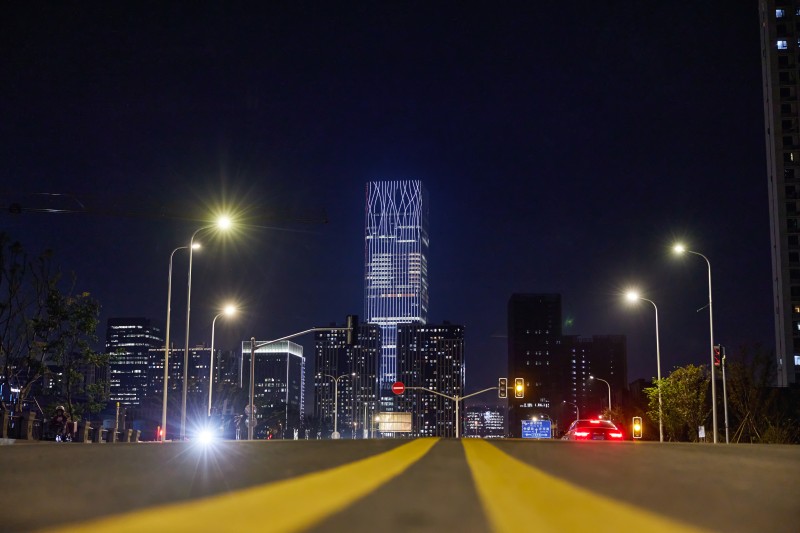Sansi LED: Sustainable LED Lighting and Integrated LED Display
Delivering premium and professional LED Display, LED Lighting, Smart City Integration solutions, trusted by over 60,000 companies worldwide everyday. From industrial lighting to commercial lighting, from outdoor advertising to XR & VR production, Sansi LED greatly improves the quality and sustainability of your business with 30 years of expert experiences.
Contents
What is Light Decay?
How Does Light Decay Affect the Lifespan of LED Street Lights?
How to Mitigate Light Decay?

With the increasing consciousness for energy conservation and environmental protection, LED street lights have gradually replaced traditional high-pressure sodium lamps and metal halide lamps due to their high efficiency, energy saving, and long lifespan, becoming the mainstream in urban lighting. However, despite the theoretically longer lifespan of LED street lights, their performance and lifespan in practical applications are influenced by various factors, with light decay being a key factor.
What is Light Decay?
Light decay, also known as luminous decay, refers to the phenomenon where the luminous intensity of an LED light source gradually decreases during use. Specifically, light decay refers to the reduction in light output of an LED lamp compared to its initial light output after operating for a period. Light decay is inevitable, though the degree varies. The reasons for light decay can be attributed to the following factors:
Material Aging: The LED chip and phosphor materials age over long-term use, leading to a decrease in luminous efficiency.
Improper Thermal Management: LEDs generate heat during operation. If heat dissipation is poor, the chip temperature rises, accelerating material aging and causing light decay.
Current Drive: Long-term high-current driving accelerates the aging of LED chips, exacerbating light decay.
Environmental Factors: External environments such as high temperatures, high humidity, and pollutants can also affect the performance of LEDs, accelerating the light decay process.
How Does Light Decay Affect the Lifespan of LED Street Lights?
The lifespan of LED street lights is often measured by the extent of light decay, for example, when the light output decreases to 70% of the initial value (i.e., L70), it is generally considered to have reached the end of its lifespan. Light decay not only directly affects the brightness of LED street lights but also indirectly affects their lifespan and maintenance costs.
1. Brightness Reduction
Light decay causes the brightness of LED street lights to gradually decrease. When the light output reduces to a certain level, the lighting effect of the street lights becomes noticeably poor, failing to meet road lighting standards. This not only affects the safety of drivers and pedestrians but may also bring about legal and regulatory issues.
2. Shortened Lifespan
Although the theoretical lifespan of LED street lights can reach tens of thousands of hours, light decay can significantly shorten their actual effective lifespan. If the light decay rate is too fast, LED street lights will need to be replaced within a few years, failing to utilize their long lifespan advantage.
3. Increased Maintenance Costs
Frequent replacement and maintenance due to light decay increase operational costs. For city managers and maintenance personnel, frequently replacing LED street lights not only increases equipment costs but also labor and time costs.
4. Reduced Energy Efficiency
LED street lights with severe light decay have reduced energy efficiency. Since the same electrical input results in less light output, the overall energy efficiency decreases, contradicting the original intention of using LED street lights for energy conservation and environmental protection.
How to Mitigate Light Decay?
To minimize the impact of light decay on the lifespan of LED street lights, the following measures can be taken:
Choose High-Quality Materials: Using high-quality LED chips and phosphor materials can effectively delay the light decay process.
Optimize Thermal Management: Designing a good heat dissipation system to ensure the LED chip operates at an appropriate temperature can significantly slow down light decay.
Reasonable Current Drive: Avoiding high-current driving and using constant current driving methods ensure LEDs operate within a safe current range.
Improve Working Environment: Avoiding prolonged exposure of LED street lights to high temperatures, high humidity, or pollutants reduces the impact of external factors on light decay.
Regular Maintenance: Regularly checking and maintaining LED street lights, cleaning dust and pollutants timely to maintain good heat dissipation.
